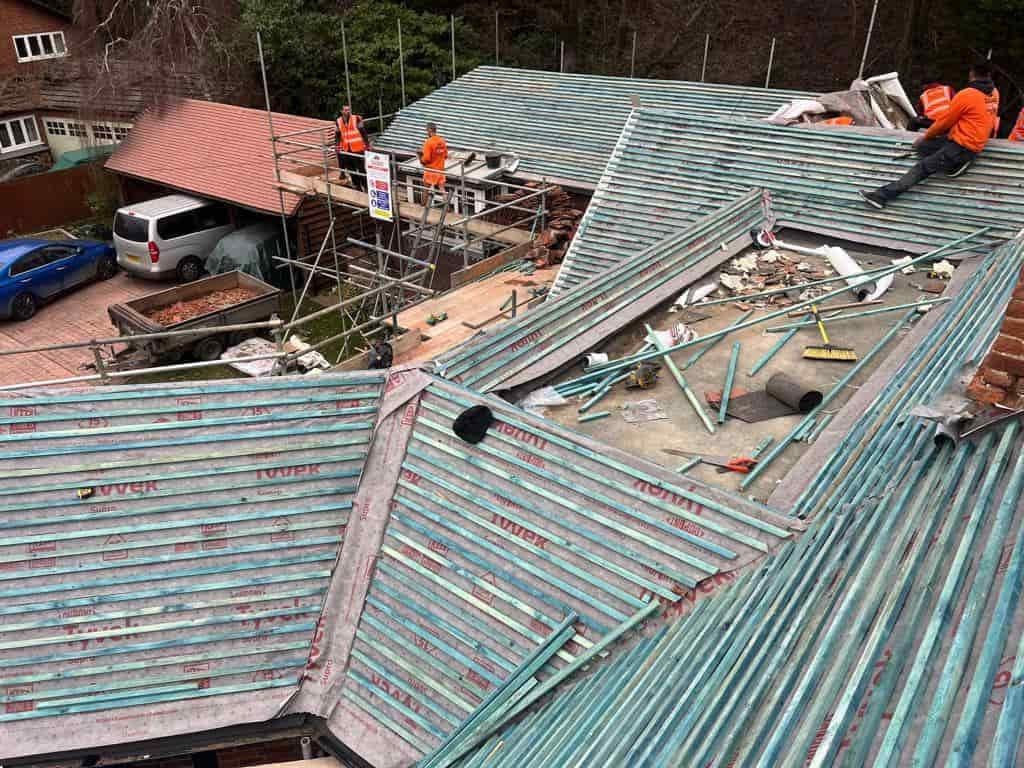Signs That Your Lead Flashing Needs Repairs: How to Identify Common Issues
Introduction: Lead flashing plays a crucial role in protecting your roof from water infiltration. However, it can deteriorate over time due to weather exposure and general wear and tear. Recognising the signs that your lead flashing needs repairs is essential to prevent water damage and maintain the integrity of your roof. In this blog post, BN Roofing Letchworth Garden City will guide you through the common signs to look out for and help you identify when lead flashing repairs are necessary.
- Visible Damage: Inspect your lead flashing for visible signs of damage, such as cracks, splits, or holes. These are often caused by weather conditions, thermal expansion and contraction, or general ageing. If you notice any visible damage, it clearly indicates that your lead flashing requires immediate attention and repair.
- Water Stains: Water stains on the ceiling or walls are often a result of water infiltration through compromised lead flashing. Look for brownish or discoloured patches on your interior surfaces, particularly near areas where lead flashing is installed, such as chimneys, vents, or roof intersections. Water stains indicate that the flashing is no longer providing a watertight seal.
- Leaks and Dampness: If you notice water dripping or seeping into your home during rainstorms, it could be a sign of deteriorated lead flashing. Check for dampness or moisture around areas where the flashing is installed. Leaks and dampness indicate that the flashing is failing to redirect water away from vulnerable areas of your roof.
- Loose or Dislodged Flashing: Inspect the lead flashing for any sections that appear loose, lifted, or dislodged from their original position. This can occur due to wind, thermal expansion and contraction, or improper installation. Loose or dislodged flashing compromises its effectiveness and requires immediate repairs to prevent water infiltration.
- Rust or Corrosion: Examine the lead flashing for signs of rust or corrosion. Rust typically appears as reddish-brown patches on the surface of the flashing. Corrosion weakens the metal and can lead to cracks or holes. If you notice rust or corrosion, it is crucial to address the issue promptly to prevent further deterioration.
- Ageing and Weathered Appearance: Lead flashing may exhibit signs of ageing and a weathered appearance over time. Look for dullness, discolouration, or a powdery residue on the surface of the flashing. These signs indicate that the flashing has endured extensive exposure to the elements and may require repairs or replacement.
- Increased Energy Costs: Deteriorated lead flashing can compromise your home’s energy efficiency. Air leaks caused by damaged flashing can lead to heat loss during colder and heat gain during warmer months. If you notice a sudden increase in your energy bills or have difficulty maintaining a consistent temperature indoors, it may be a result of compromised lead flashing.
Conclusion: Recognising the signs that your lead flashing needs repairs is crucial for maintaining the integrity of your roof and preventing water damage. If you observe visible damage, water stains, leaks, loose flashing, rust, corrosion, or signs of ageing, it is recommended to seek professional assistance from BN Roofing Letchworth Garden City. Our experienced team can assess the condition of your lead flashing, provide necessary repairs, and ensure that your roof remains watertight and protected for years to come. Don’t overlook these signs—act promptly to safeguard your roof and preserve the integrity of your home.
Call us on 01462 411 099 or click here to complete our contact form and see how we can help with your roofing needs.

